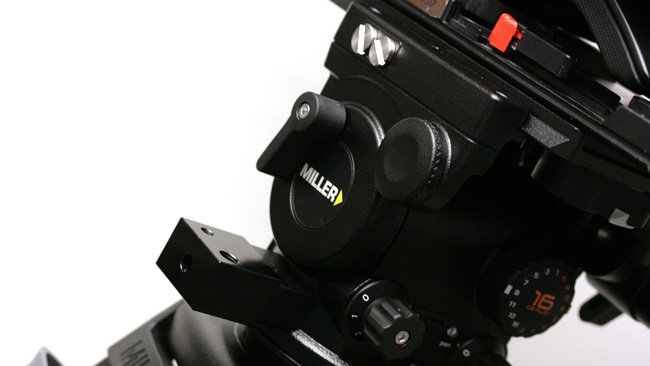
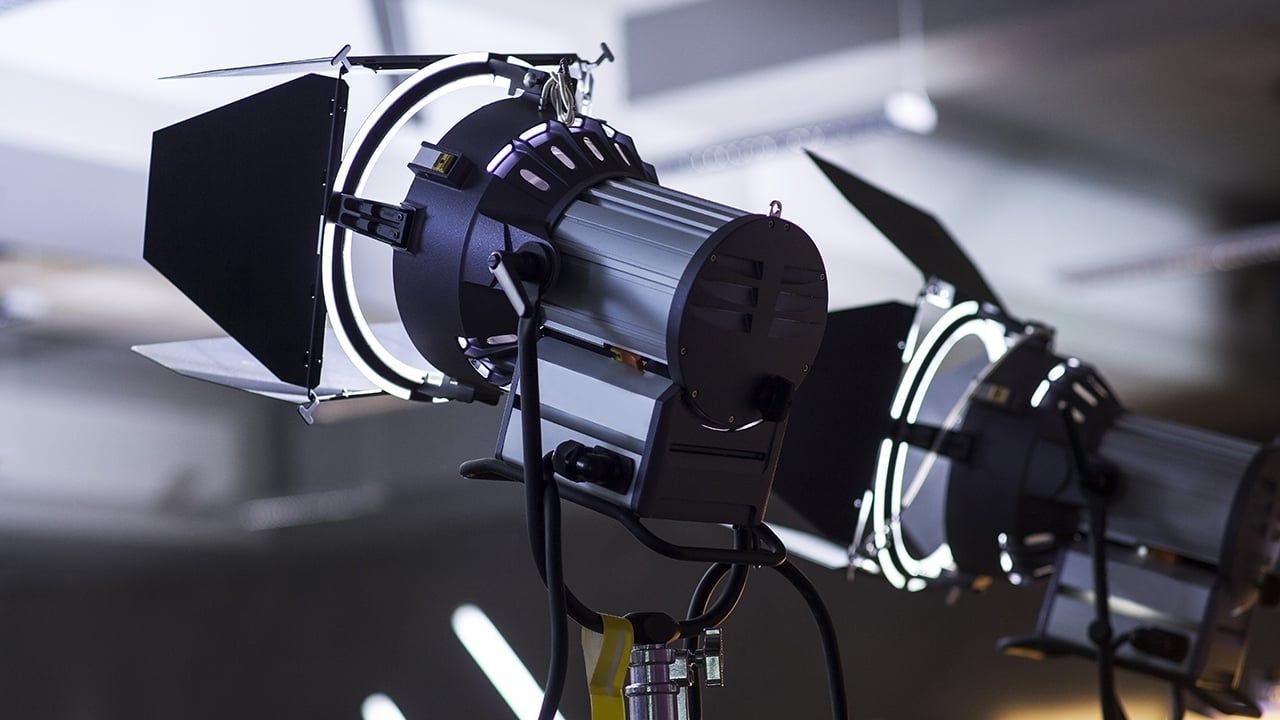 Support gear is more important than the camera you use
Support gear is more important than the camera you use
When it comes to filming, the camera you own is often not as important as the support gear you have. Phil Rhodes investigates some of the most important parts of the equipment bag you shouldn't be without, while avoiding giving your bank account cause for concern.
I've occasionally been accused of being a curmudgeon, especially when there's recently been a new camera release and everyone is very excited about how it's going to change the world and make lighting unnecessary. In order to dispel any reputation as a serial malcontent, then, it seemed like a good idea to redress the balance. As such, this article suggests some things that people absolutely should buy, especially when they're fresh out of film school with huge debts and it seems, for some reason, like a good time to spend money on gear.
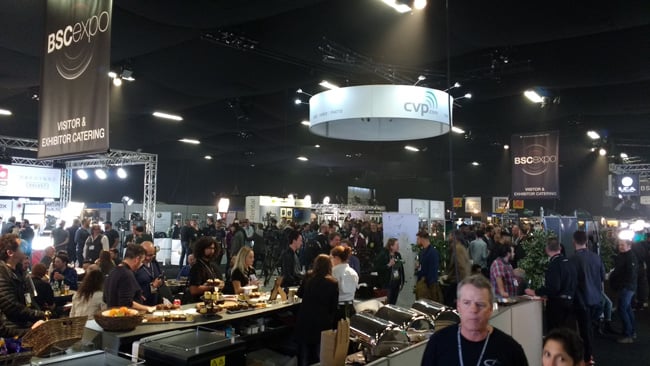
Trade shows. A box of delights, but what to buy
The whole point of this exercise is to demonstrate that the best (or at least longest-lived) investments are probably the least shiny ones. Nobody respects a lighting stand (though they cost £200) and carts are just things to play bumper-cars during lunch breaks (for the princely sum of, oh, £1000). Nobody was ever hired for their ability to produce a sandbag (£30, with brand logo, excluding sand), so this is not a kit list that's likely to buy anyone any work, as if buying work by giving away gear is a good idea in any case. This is designed to target money effectively. Most of the things we'll list are items that most people will buy anyway, but often try to do on the cheap, and end up spending more in the long run.
Power
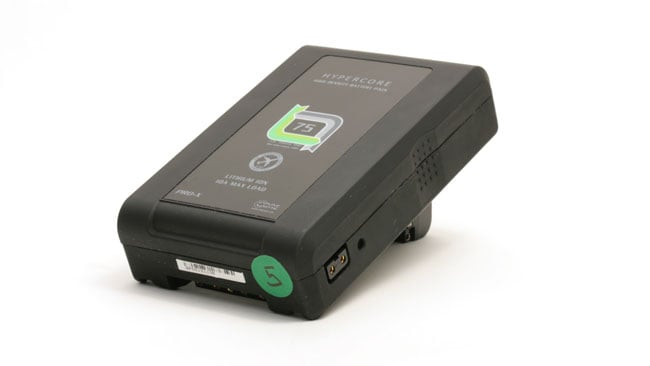
Core SWX Hypercore 75 lithium-ion battery, 82 watt-hour
No matter how good lights get, barring the development of an entirely new field of physics, they're always going to consume at least some power. Likewise, regardless of the number of pixels on a camera's sensor, it's still going to need a battery slapped on the back. Batteries are forever.
Well, actually, modern batteries based on lithium-ion technology are emphatically not forever. Their performance begins to decay from the date of manufacture even if they're not being used, so any investment in lithium-ion batteries needs to ensure they can be “recelled”. Some people might consider nickel metal hydride as an alternative – which can be cheaper, lasts longer, is rather less thoroughbred and flighty from a safety perspective and is easier to get onto aircraft. Lithium has the edge in terms of performance, certainly, but it's not the only game in town.
Power ancillaries include things such as brackets to mount your batteries on 15mm rods, plates to adapt them to other types of battery plate, cables to suit various connector types and even dummy batteries and regulators to run things like DSLRs.
On the cheap: Full-sized broadcast camera batteries can be very expensive. People have had good results running lighting from the lithium-polymer packs built for radio control hobbyists and drones. The programmable chargers that are often used for them are actually very flexible and can be used to charge almost any type of battery, given adequate knowledge about the underlying technology and the relevant safety issues. These chargers can run from 12V power for charging in vehicles, so it's often worth having one around in case of a sudden crisis (but please only attempt this if you know what you are doing!)
Camera support
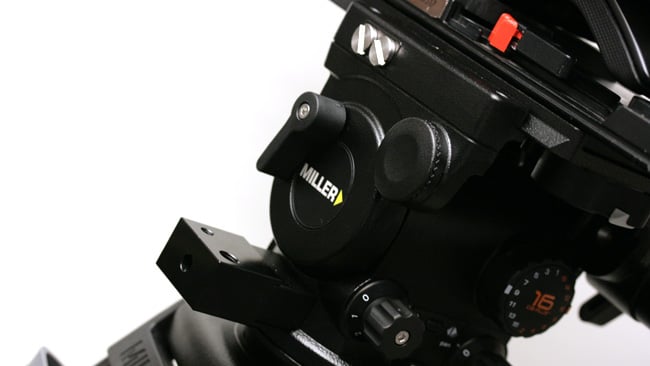
Miller ArrowX 3
Most people understand that even the edgiest production will usually need a tripod. With modern designs capable of dialling the spring tension up and down, there's not really any such thing as “too big.” There's certainly such a thing as too small, however. Flimsy legs and a head without adequate rigidity can make it almost impossible to execute certain shots without things looking sloppy.
Look, at the minimum, for a tripod with a separable head and separable legs, and at least a 75mm-sized ball mount. This will allow the head to be separated and mounted on other things (a crane, a slider, etc.) Look also for a head with selectable spring tension which will accommodate cameras of a widely varying size and weight. It's probably worth looking for something with a built-in spreader, which makes the tripod a lot easier to deploy on smooth or slippery surfaces.
This essentially describes something like a Miller ArrowX 3, which might seem expensive to our notional recent school leaver. Therefore:
On the cheap: Avoid lower cost tripods. Used tripods will inevitably be a better option. As quality products, they tend to last and unless yours happens to have been caught in an explosion while being used to shoot news in a war zone, most manufacturers offer maintenance services which will keep it working for years.
Lighting control
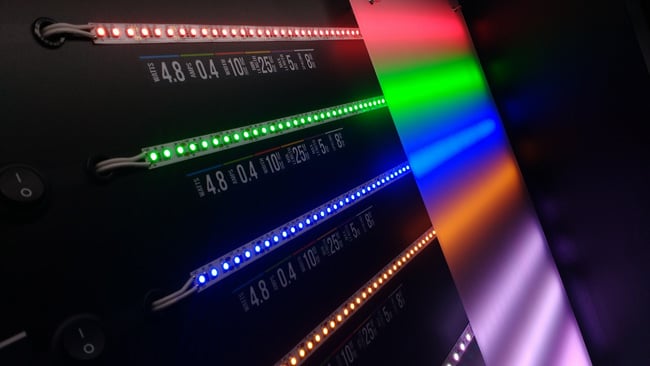
Even LEDs look ugly until they're diffused
Not lights, but lighting control. In most parts of the world the sun comes up every day, and the ability to control what's there is at least as important as the ability to create more of it. Lighting control at its most basic level means flags, which are black, and reflectors, which may be silver or white. The most basic way to do this is simply to use the pop-up, Lastolite-style reflectors, holders and stands designed for stills photographers, which are perfectly serviceable until the wind starts to blow. The types with zip-off outer covers, combining white, black, gold and silver, are very flexible, and with the cover entirely removed they serve as diffusion.
The next step up from this is a proper flag set, perhaps in 24 by 36 inches, though they'll require stands and a lot more transport. Matthews Road Rags are an interesting intermediate option.
On the cheap: Get some polystyrene insulating board from a DIY store and paint it black or white, or stick mylar foil (a space blanket) to it. Again, though, that'll still need stands. Speaking of which:
C-stands
No, we're still not talking about lighting, because you can light many things perfectly adequately with some ultra-cheap halogen floodlights from eBay if you really have to. C-stands will let you do that, or put a flag in exactly the right place in a way that even the neat little reflector clamps and stands used by stills people won't allow.
Some people prefer small combo stands, which can take either device with 28mm junior pins (also called TV spigots outside the US) or have a 5/8” spigot which can be flipped up into place. Not only are they more flexible but they tend to pack down smaller, having folding legs, unlike a C-stand. In general, though, nobody was ever fired for buying a C-stand.
On the cheap: Buy used. Some stands will have been misused so terribly that large pieces of steel tube will be bent beyond repair; reject these, but otherwise, they don't really go bad. The imported ones tend to be about the same price as the used ones, so it really isn't worth it.
A decent onboard monitor
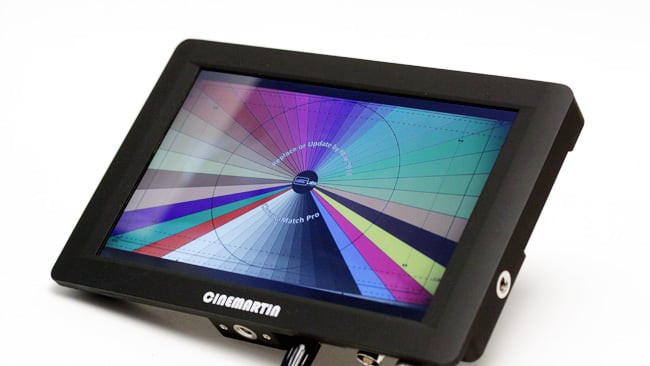
Cinemartin's Eclipse monitor has high brightness for outdoor use
Thanks to displays developed for tablets, it's never been cheaper to get a really decent display. The main issue is that if you're intending to shoot a lot of 4K (which is no bad idea, if only to get better HD results) then look out for something which accepts 4K images even if it doesn't have a 4K display. Beyond a clear picture that's likely to remain readable in sunlight, there's really only two major features to look for in a lower-cost option: a waveform monitor, which is probably the most informative exposure tool for video, and the ability to zoom in to check focus, especially with the ability to scan around the zoomed image at a touch. Given modern cameras, which have high dynamic range, small exposure errors are more fixable than ever, but they also tend to have quite high resolution and soft focus is effectively unrepairable.
Ensure sufficient cables, converters and other accessories to keep the monitor powered and supplied with a signal in all of the circumstances in which it will be used (this may require a case of its own.)
On the cheap: There are so many low-cost options that it's hard to be specific, but giving up the waveform monitor, though a shame, opens up a lot of options. Cinemartin has a great little 5” option which does have waveforms.
The rest
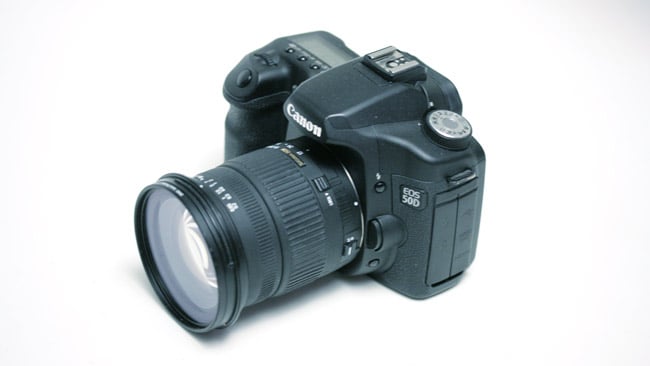
The mighty Canon EOS-50D, possibly the cheapest route to raw video
Yes, you're going to need a camera, but that's the most sensible thing to rent, especially when starting out. If there's a need to own something, if we live too far from a rental place to make it worthwhile or if insurance is a drag, last generation's DSLR or Blackmagic's cheapest product, used, is probably fine. Learning how to block, frame and light shots will make far more of a difference to anyone's work than another half stop of dynamic range.
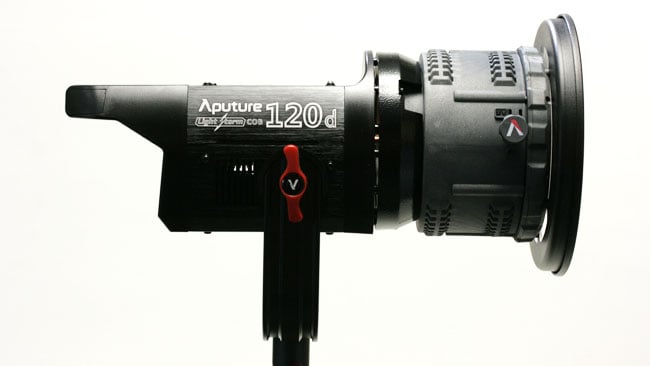
Aputure's COB-120 can be comfortably powered by most conventional camera batteries-2
Lighting-wise, most setups will use two or three lights. LED is nice and at some point, the ability to walk in a battery-powered light can make the difference – in speed – between being able to finesse a shot and not being able to. Issues of portability aside, though, there's nothing wrong with a set of redheads from fifteen years ago. Hard light can become soft light simply by being bounced and the results needn't betray the approach used to create them. LEDs are becoming more affordable as time goes on, however, and the conveniences really are so noticeable that even cost-conscious basics articles such as this one could probably find a reasonable excuse to recommend them.
And finally
Gear acquisition syndrome is a serious complaint and one that we're at risk of provoking here. Still, since it's probable that a sufferer will eventually start buying toys, er, equipment anyway, it's a good idea to spend money as wisely as possible. Hopefully, by avoiding the most commonly discussed options in camera and lighting, we've been useful here. If there's anything obviously missing, please let us know in the comments.
Header image courtesy of Shutterstock.
Tags: Production


Comments